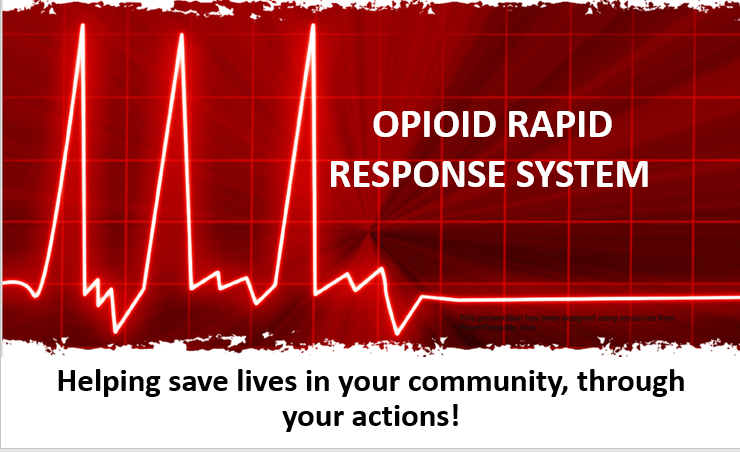A smartphone app that activates civilian emergency responders to 911 calls has the potential to save the lives of people experiencing overdoses amid a historic nationwide crisis.
As the fatal overdose toll reaches unprecedented heights during the COVID-19 pandemic, a research trio is developing the Opioid Rapid Response System (ORRS), a project that trains civilians in naloxone administration so they can respond to 911 emergencies reported to the app, PulsePoint.
Cris Henderson, Dr. Annie Pezalla and Dr. Michael Hecht hope to present a solution to the issues presented by under-resourced emergency medical services (EMS) and the time-sensitivity of overdose responses.
“Emergency responders have many responsibilities [and] there are just not enough to deal with the size of the overdose problem,” they wrote to Filter, adding that “EMS and fire departments are often geographically distanced especially in rural and exurban areas or inhibited by the density of inner-city or suburban environments.”
Equipping community members themselves with the know-how and medication to save the lives of people who use drugs can ameliorate these practical challenges. “Research demonstrates that
communities with more responders are more effective reversing overdoses and that this involves utilizing citizen responders,” the researchers continued. “Citizen responders, cross-trained to administer naloxone and rescue breathing responding to PulsePoint notifications, takes random luck and chance out of the equation—increasing the likelihood that lives will be saved.”
“The key will be informing communities about the availability of the Opioid Rapid Response System and how it fits into their overall emergency response preparedness.”
The ORRS has been undergoing a clinical trial since October 2020. In that trial, the researchers intend to establish its “usability and feasibility” by evaluating how 400 participants in two Indiana counties respond to either face-to-face or online naloxone training, and whether those methods are equally effective. The efficacy of the intervention—preparing participants to respond to overdoses—will be measured by the number of their responses and the number of lives saved.
The already-historic overdose crisis in Indiana has only worsened since the beginning of the pandemic. Between June 2019 and June 2020, the state saw a 26 percent increase in fatal overdoses—well above the nation’s average increase of 21.3 percent.
After the completion of the trial on March 31, 2021, statewide trials in Indiana and Washington will be conducted to determine the number of lives that can be saved and the program’s cost effectiveness. Scaling the intervention will then require getting the word out.
“Currently, the over 4,000 PulsePoint communities are not equipped to deal with opioid overdoses,” the team wrote. “The key will be informing the communities about the availability of the Opioid Rapid Response System and helping them understand how it fits into their overall emergency response preparedness, particularly the opioid overdose epidemic.”
A shift toward activating civilian responders represents a critical opportunity to remove police from responding to health emergencies.
The team believes the clinical trial findings will be make important contributions to the field of overdose response. “There do not appear to be any evidence-based naloxone training programs for any audience, citizen responders included. While programs exist, their efficacy has not been tested,” they wrote. “This training program will have scientific evidence of its ability to effectively train citizen responders and have a proven ability to save lives.”
They describe the naloxone trainings that do currently exist as “largely informational,” “didactic” and overall “not the most effective” in creating a sense of motivation and empowerment among trainees.
A shift toward activating civilian responders represents a critical opportunity to remove police from responding to health emergencies, as so many activists have called for—especially since the 2020 uprisings. But the researchers were clear that they have no intention of presenting an alternative to law enforcement. “[We] are grateful for the support we’ve received from law enforcement in Hancock.”
That includes the Hancock County prosecutor’s office, which established a policy last year of exploiting the successful administration of naloxone to pursue the criminalization of overdose survivors, according to public records obtained by Filter last year. Henderson noted that the prosecutor’s approach might not be the “most effective” for supporting people, and harm reduction advocates have denounced the policy in interviews for the article.
Despite that, the team says ORRS and the prosecutor “both have the same goal in mind: to save lives.”
Promotional image for the Opioid Rapid Response System courtesy of Cris Henderson





Show Comments